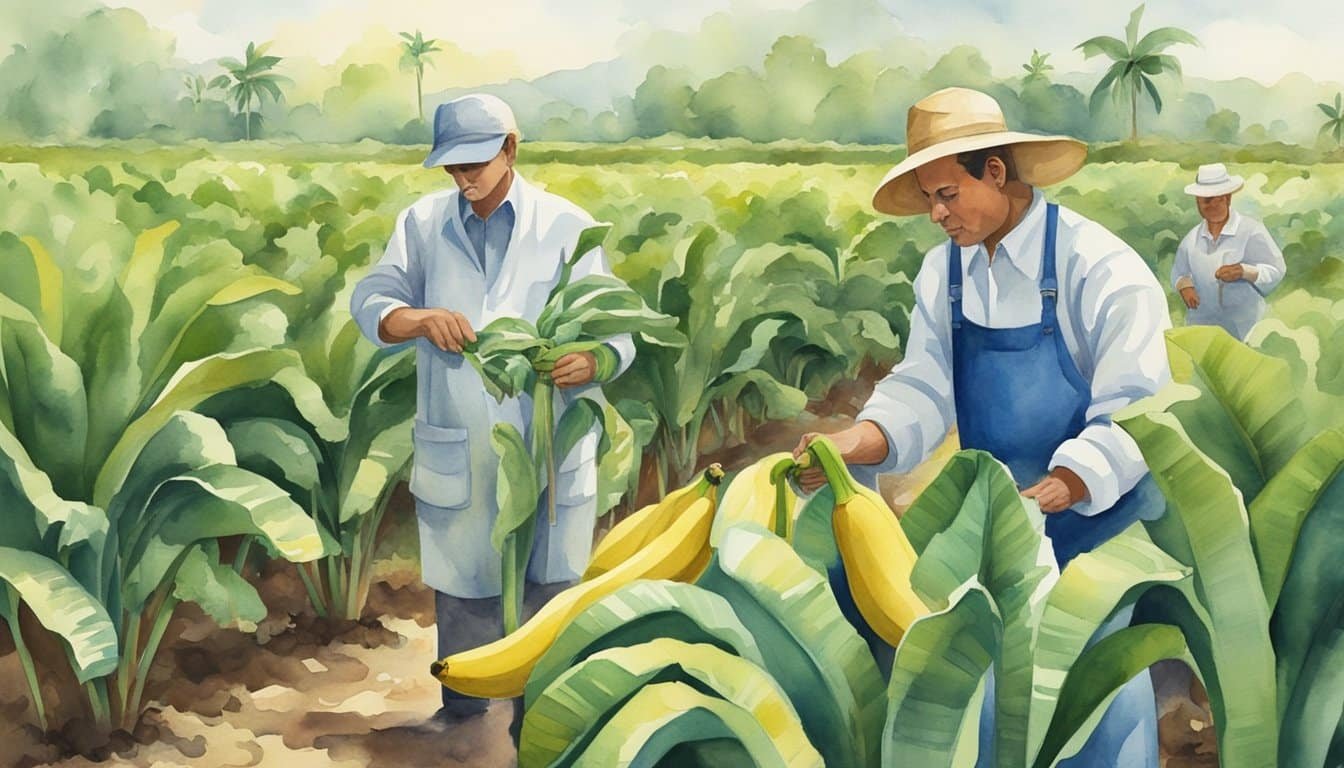Understanding GMO Bananas
The future of bananas may hinge on the adoption of genetically modified varieties. Here’s an exploration into GMO bananas and why they are becoming increasingly significant for the longevity of our beloved fruit.
What Are Genetically Modified Bananas?
Genetically modified (GM) bananas are bananas that have had their genetic material altered using biotechnology. Scientists specifically introduce new DNA sequences to bestow certain desirable traits upon the fruit. These traits might include resistance to pests, diseases, or climatic conditions that ordinarily would devastate traditional banana crops.
Cavendish Bananas and Genetic Modification
The Cavendish banana, the most widely consumed banana globally, faces threats from diseases like Tropical Race 4 (TR4) of Panama disease. This has spurred the development of GM Cavendish bananas, which are engineered to resist TR4, potentially preserving the future of this monoculture. It’s an essential effort since almost all Cavendish bananas are clones, having very little genetic diversity, which makes them particularly vulnerable to disease outbreaks.
GMO vs. Traditional Breeding Techniques
Traditional breeding involves selecting plants with desirable traits and breeding them over multiple generations. In contrast, genetic modification enables direct insertion or manipulation of genes. While traditional breeding can take decades to produce results, GM techniques can accomplish objectives in a significantly shorter time frame. Despite controversies surrounding GM foods, genetic modification offers a precise means of enhancing banana biodiversity and resilience, a crucial step in securing global banana supplies.
Threats and Solutions in Banana Cultivation

Banana cultivation faces significant threats from plant diseases like Panama Disease, but advances in biotechnology and farming practices offer modern solutions to these challenges.
Fusarium Wilt: The Panama Disease
Fusarium wilt, also known as Panama Disease, is a relentless plant disease caused by the Fusarium fungus, specifically the Tropical Race 4 (TR4) strain. It devastates banana plantations by infiltrating and damaging the vascular system of banana plants, leading to wilting and ultimately plant death. Historically, this disease wiped out the Gros Michel banana variety and now threatens the widely cultivated Cavendish variety. With no effective chemical control for the disease and TR4’s ability to persist in the soil for decades, this poses a real risk of extinction for certain banana varieties.
CRISPR and Gene-Editing For Disease Resistance
The application of genome editing, particularly CRISPR/Cas9 technology, introduces a glimmer of hope in battling diseases like Panama Disease. Genome editing enables precise alterations in a banana’s DNA, aiming to enhance disease resistance by inserting a resistance gene or altering existing genes that can fend off Fusarium wilt. This innovative approach is at the forefront of research and could produce new commercial banana varieties with in-built disease resistance, potentially safeguarding the future of banana cultivation.
Biosecurity Measures and Farming Practices
Effective biosecurity measures are essential in curbing the spread of diseases like Fusarium wilt. Quarantine procedures, disinfecting tools and boots, and controlling the movement of potentially contaminated soil or plant material help minimize the risk. Meanwhile, evolving farming practices such as crop rotation and the use of resistant cultivars can also support the ongoing battle against this pathogen. By combining stringent biosecurity with improved cultivation methods, banana producers can enhance the overall resilience of banana farms to disease threats.
Banana GMOs and Consumer Considerations

When it comes to genetically modified organisms (GMOs), bananas are a hot topic among consumers who have varied opinions on the technology’s implications for safety, regulation, and food security.
Safety and Regulatory Aspects
Gene-editing advancements have presented a safety net for crops like the Gros Michel banana, which once dominated the Americas but succumbed to disease. Now, GMO versions could be more disease-resistant, a significant step forward in fruit production. Entities like the Office of the Gene Technology Regulator and Food Standards Australia New Zealand play critical roles in assessing the safety of these gene-edited foods, ensuring they meet rigorous safety standards before reaching consumers. Clinical trials, when applicable, further underpin the credibility of GMOs, exemplifying the robust regulatory framework that hedges against potential risks.
Public View on GM Bananas and Food Security
The perceptions of consumers toward GM food can vary widely, reflecting concerns about potential risks and the benefits to food security. In regions like Uganda, where bananas are staple food, GM bananas could potentially bolster food security by improving crop yields and nutrition. However, their acceptance hinges on public opinion, which is shaped by cultural, ethical, and informational factors. The European Union, with its stringent GM food regulations, highlights the complexity of public attitudes toward GMOs, underscoring the need for transparent information and education to navigate the intricate landscape of food biotechnology.

